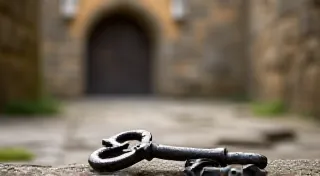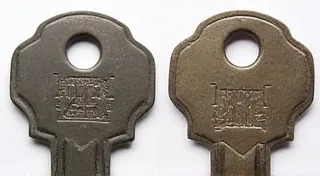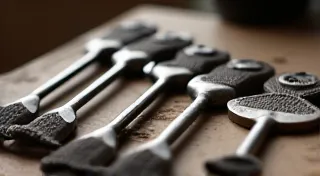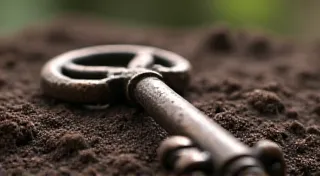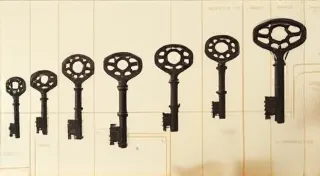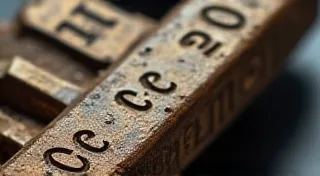The Role of Keys in Antique Furniture
Antique keys aren't just metal objects; they're fascinating pieces of history intrinsically linked to the furniture they once secured. Understanding the relationship between antique keys and furniture can significantly enhance your appreciation for both and even aid in key identification. This article delves into this connection, exploring how antique keys played a vital role in antique furniture and chests, and offering insights into identifying keys that originated with specific pieces.
The Functional Necessity of Antique Keys
Before modern locking mechanisms became widespread, keys were absolutely essential for safeguarding furniture. Chests, bureaus, desks, and cabinets all relied on keys to protect their contents – valuables, documents, and personal belongings. The design and construction of antique furniture were therefore inextricably tied to the keyhole and the accompanying locking system. The quality of the key was often a direct reflection of the furniture’s overall value and the owner's status. For those just starting to explore the world of antique keys, a beginner's guide to antique keys can be an invaluable resource to gain a foundational understanding.
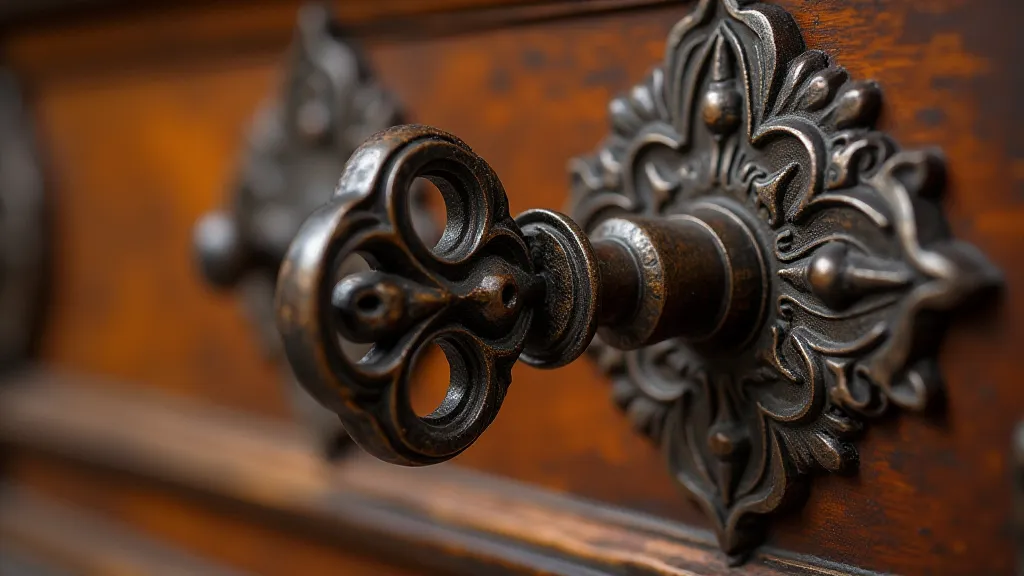
Key Design Reflects Furniture Style
Just as furniture styles evolved over time – from Queen Anne to Victorian – so did key design. Examining a key's features can provide clues about the era the furniture likely originates from:
- Early Keys (17th & 18th Century): These keys are typically simpler in design, often featuring square or rectangular shapes with a basic bow (the looped part at the end). They were often hand-cut and lack the intricate details found in later keys.
- Georgian Keys (18th Century): Keys from this period often demonstrate a move towards greater ornamentation, featuring more detailed bows and slightly more refined shapes.
- Victorian Keys (19th Century): Victorian-era keys are characterized by elaborate designs. Bows frequently incorporate decorative elements, such as floral motifs, scrolls, and even small animal figures. Wardrobe keys from this period were particularly ornate.
- Key Blanks & Furniture Keys: Often furniture makers would order a large batch of key blanks to be cut to the exact specifications of their furniture, so the keys for a chest may have been cut on site, ensuring a perfect fit. The different types of keys can be confusing, so understanding the difference between mortise keys and bit keys can be a useful next step.
Identifying Keys That Belonged to Furniture
Determining if an antique key originally belonged to a particular piece of furniture can be challenging, but here are some factors to consider:
- Size and Shape: The most obvious factor is the physical fit. Does the key enter the keyhole smoothly without excessive force? A key that's too large or too small is unlikely to be original.
- Wear Patterns: Examine the key and the keyhole for signs of wear. Matching wear patterns suggest that the key has been used regularly in that specific keyhole.
- Key Material: Original keys were typically made of iron or brass. Rust or discoloration on an iron key is common with age. Brass keys often develop a patina.
- Key Bit Profile: The profile (shape) of the bit (the part that engages the lock mechanism) is crucial. If possible, compare the key's bit profile to the keyhole’s internal mechanism. Variations in key profiles can signify different lock types and eras.
- Key Collecting on a Budget: For those interested in building a collection, there are many ways to acquire antique keys without breaking the bank. Exploring affordable antique finds can be a rewarding journey for any enthusiast.
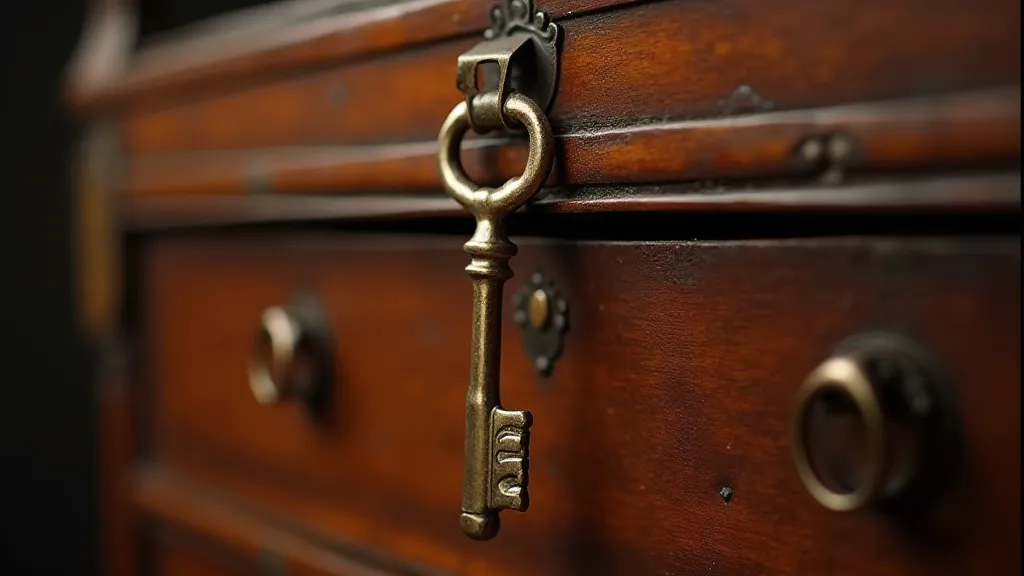
Beyond Functionality: Keys as Decorative Elements
In some instances, antique keys were more than just functional components; they became decorative elements in their own right. Elaborately designed keys were sometimes kept as cherished heirlooms, displayed as decorative items, or even incorporated into jewelry. This highlights the craftsmanship and artistry involved in their creation. They are now sought after for key collecting, and some collectors are seeking out keys that feel connected to something beyond the purely functional – a sense of "sympathetic resonance" between the key and a deeper feeling or connection. This can elevate a key from a simple object to a treasured artifact.
Caring for Antique Keys and Furniture
Proper care and storage are crucial for preserving both antique keys and the furniture they belonged to. Avoid harsh chemicals when cleaning keys. Lightly oiling brass keys can prevent tarnishing. When handling antique furniture, be mindful of the original keyholes to prevent damage. Consider the overall value and history of your pieces; even seemingly minor actions can have a significant impact on their long-term preservation.
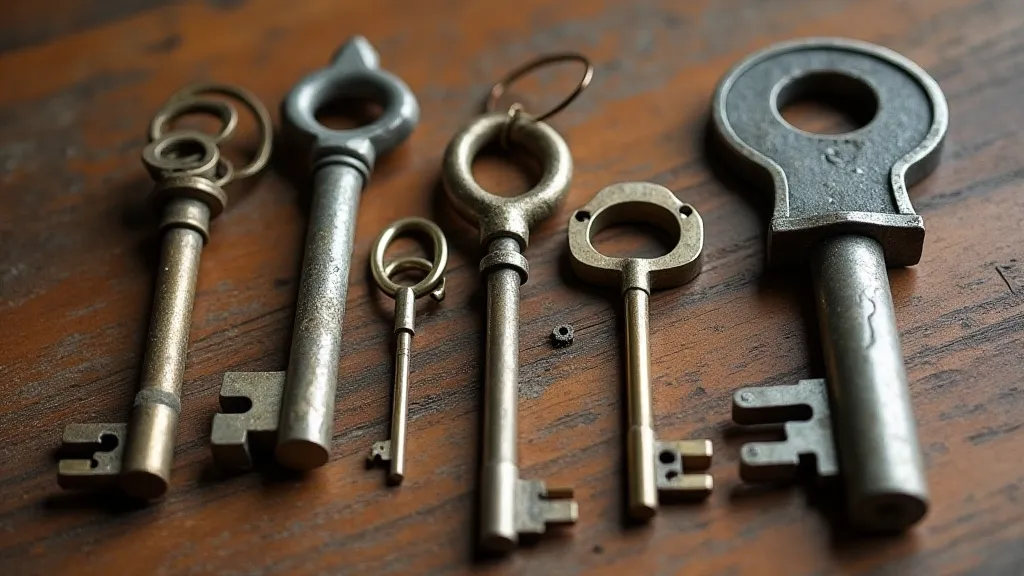
The Evolution of Key Design and Lock Technology
The story of antique keys is inextricably linked to the evolution of lock technology. Early locks were remarkably simple, often relying on warding – internal obstructions that the key had to manipulate to disengage the mechanism. As craftsmanship improved, so did the complexity of both locks and keys. The development of pin tumbler locks, for example, brought about a new level of security and necessitated more sophisticated key designs. The intricacy of the key often reflected the value of the item it was protecting.
The Cultural Significance of Antique Keys
Antique keys represent more than just functional objects; they hold immense cultural significance. They are tangible links to the past, offering glimpses into the lives of previous generations. Keys can evoke a sense of nostalgia, mystery, and connection to history. The act of holding an antique key can transport you back in time, allowing you to imagine the stories it could tell. For some, the desire to possess a key isn’t just about ownership, but about a yearning for a connection to a narrative that extends far beyond their own lives.
Building an Antique Key Collection: Tips and Resources
For those captivated by the allure of antique keys, building a collection can be a rewarding endeavor. Start by researching different types of keys and the periods they represent. Visit antique shops, flea markets, and online auctions. Consider specializing in a particular type of key or a specific historical period. Engage with other collectors and share your knowledge and passion. Remember, the joy of collecting lies not just in acquiring objects, but also in the journey of discovery and connection.
Key Collecting on a Budget: Finding Treasures Without Breaking the Bank
Building an antique key collection doesn't require deep pockets. Plenty of affordable treasures can be found with a bit of patience and resourcefulness. Flea markets and estate sales often yield incredible finds at bargain prices. Online auctions and classified ads are also great sources for finding keys within a limited budget. Don't be afraid to haggle or negotiate – it's a common practice at antique markets and auctions.
Conclusion
Antique keys provide a tangible link to the past, offering invaluable insights into the furniture they once secured and the lives of those who used them. By understanding the relationship between antique keys and furniture, you can deepen your appreciation for these fascinating artifacts and contribute to preserving their historical significance. Further research into key history will only add to your enjoyment and the value of your collection. Whether you're a seasoned collector or just beginning your journey, the world of antique keys is full of surprises and rewards.
